Offensive Theory: How to Score More Points by Understanding the Theory and Philosophy Behind Offense
Developing offenses for your team is probably the most visible part of a coach's job. After all, the object of the game is to put the ball in the basket. It is a vehicle that coaches use, not only to score, but to include players in their team concept, give them value and affect their self image. Want to see a player's self esteem go up? Run a few plays for him and watch him score. Want to see a player sulk? Don't call anything for him.
The purpose of this article is NOT to give you an offense or a play.
There is an untold number of resources for that. Our website has a section devoted to offenses. Rather it is meant to try to give you some insight into developing offenses of your own. There are several common threads that flow through all offensive development and I've tried to give you some of them here. Other than that, the only limit to your development is your own imagination.
What is an Offense?
What is an offense and why do we need one? Well an offense is a series of cuts, passes, screens, etc. that are designed to create a particular shot for a particular player. We need an offense to provide organization and a singleness of purpose amongst the players. Even a free form offense (explained later in the article) like a motion should be infused with philosophy and objectives so the players have a clear idea of what they are trying to get accomplished.
What should go into a coach's decision as to what to run on offense? There are 2 schools of thought:
The "System" Coach
The system coach has 1 offensive system that he will run year after year after year. The good ones will adapt that system to their players but many do not. Well known system coaches include Pete Carrill (Princeton), Dean Smith (North Carolina) and John Wooden (UCLA). There are many current coaches who are system coaches but these three have had a system that has defined their college program and all of the coaches that followed them ran the same system. They are masters of adjustments. Dean Smith, best known for the passing game offense also developed the point guard concept to adapt the system to Phil Ford. Pete Carrill adapted his Princeton Offense from an interior oriented, backdoor offense to one that used a three point shot as its main weapon with the addition of the 3 point line. John Wooden adapted his "UCLA High – Low Post Offense" from a 2-3 set with Lew Alcindor (now Kareem Abdul Jabbar) to a 1-4 set when he graduated and they played with Curtis Rowe and Sidney Wicks. In the NBA, Phil Jackson is well known for his Triangle Offense which he has run since he was the Head Coach of the Albany Patroons in the CBA.
Systems have their advantages. The continuity from year to year means only a few new players have to learn it each year and, due to experience, the returning players are better at it. The coach, in running it year after year, gets better at making in game adjustments.
The negative is that the system doesn't always fit the personnel. Players that are mismatched for the system won't play to their potential and will find it very difficult to fit in.
Systems are great but unless you have an established feeder system or you can recruit players that allow you to choose the ones that are best suited for your system, the system becomes very difficult to continue.
The "Non-System" Coach
The non-system coach changes each year. He looks at his personnel and constructs an offense specifically for the group of players he has on his team at that time. The coach carefully evaluates the strengths and weaknesses of each player and constructs an offense around them.
The advantage to this type of system is that it is tailor made for the personnel. Roles can be firmly established and players can be comfortable in their roles. These types of coaches are difficult for opponents to prepare for due to the fact that each year is different.
The downside is that you cannot draw on experience from your players. Since the offense changes every year, it will be new to each of your players. They will learn and grow together, however it will be a slow process.
This type of offense is appropriate for teams that have high turnover from year to year, such as youth teams, high schools with no established feeder system, prep schools or junior colleges.
To get FREE 33 Winning Basketball Plays, click the banner below
Types of Offenses
There are several different types of offenses and it is important that the type you choose is not only appropriate for your personnel, but something you are comfortable with. Once the ball goes up and the game starts, there is little you can do to make decisions for your players. You really have to decide what you can live with and what you can't. Be sure to put those priorities into your practices so your players are more comfortable with them in game situations.
Free Form Offense
This includes motion and passing game offenses. To run these offenses, each of your players must be skilled and comfortable in any position on the floor. The coach has very little control over what happens on the floor, all the decision making is made on the floor. The coach cannot decide who shoots or who dribbles and must accept the decisions made by the players.
Free form offenses typically have rules as opposed to plays or patterns. When practicing, coaches should not only reinforce the rules but try to give a big picture to his players. They have to understand why they are doing things, not just that they have to do them. A cut on the second pass might create a lay-up on the fourth pass. Without the big picture, your players will never get to the fourth pass.
In a free form offense, player roles must be very clearly defined. Players must know who the shooters are, who the penetrators are and who the passers are. They must understand their own roles, the roles of their teammates, embrace those roles and play toward their strengths. They must understand that being open is not a good enough reason to shoot the ball if there is a better shooter open for the next pass.
Free form offenses are adaptable, difficult to scout and difficult to play against because it is unpredictable. But, it can take time to teach and learn and having a continuity of players is important.
Continuity Offenses
These include the Flex and Shuffle offenses. A continuity offense has a pattern that turns over and over and over without the need to stop or reset. This affords the coach a little more control over his team due to the fact he knows the next cut and the next pass.
Players need specific skills that need to be performed in specific areas. A post man that comes to the top of the key to reverse the ball, does not need to worry about making a shot or creating a play, only passing the ball to continue the offense.
These types of offenses can wear down defenses, run the clock down and can get shooters into multiple areas to get their shots. They are especially effective at levels where there is no shot clock. This allows the pattern to be turned over continually until the defense breaks down.
Called Play Offenses
Called plays such as the UCLA High-Low Post, can be anywhere from 1 pass and cut to an elaborate pattern and anywhere in between. But these plays have a definitive entry and end. They have an end objective (finish up with the ball to the 5 man on the block, for example) but have multiple scoring options on the way to that end.
Plays can be used to run clock or gain control of the tempo. Players need only to have the skills that are called for in their particular role inside that play. A well constructed play has each player only handling the ball in areas where they can be effective.
Called plays can be very effective but require a maximum amount of practice due to the higher number of predetermined passes and cuts coupled with the counters that are needed when an option is defended. In addition, the more passes and cuts that are made and the longer the play runs, the more concentration is needed from the players. When the play is exhausted, if a good shot is not created, this type of offense usually either reverts to a motion offense or a quick hitter play.
Quick Hitter Offenses
Quick Hitters usually involve 1 or 2 passes and a cut. The object is to get a particular player a shot in a specific area as quickly as possible. These are usually used with a short clock (game or shot), when you have limited talent and need to control who shoots, where and when, when you need to attack a particular defender due to game situation or if you have a great player and want to make sure he gets the ball.
Quick Hitters give the coach the maximum control over their team and the offensive system contains a large number of individual plays. Because of the length and uniqueness of each play, it is not difficult for a player to remember a large number of them.
In this type of offense, passes and cuts must be accurate and precise due to the fact that a pass or cut will make the play easily recognizable to the defense. You also need options should your team not get the shot it wants at the end of the play. Most quick hitters flow into a free form offense and are also used as last second or late shot clock plays.
Zone Offense
Zone offense has similar traits to a man offense with a few adjustments. In a man offense, you attack players, in a zone offense, you attack areas. Cuts are not as important, positioning and spacing are the premiums. Each set should have a wing outlet, a post outlet, a reversal outlet, and an opposite outlet. How the players get there is largely unimportant. As the ball moves, the players try to slide into "dead spots" in the zone. A "dead spot" is an area that might be unguarded due to some type of confusion or overlapping in defensive coverage. Each time the ball moves, the zone has to adjust and those "dead spots" change as well.
Aside from searching those dead spots, there really is very little difference between constructing a zone or man offense.
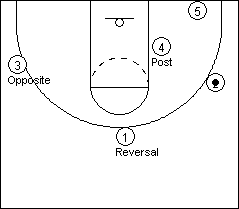
In this example of a zone offensive setup
2 has the ball on the wing
1 searches for "dead spots" on top and serves as ball reversal
3 is the opposite option and searches for "dead spots" on the weakside
4 is the post option
5 looks along the baseline for "dead spots."
What is Most Important When Teaching an Offense
While these offensive types are very diverse, there are common threads between all of them.
Spacing
The most valuable commodity in any offense is space. Proper spacing provides operating room for offensive players, good opportunities for screening and allows you to control matchups. In addition, good spacing forces the defense to make decisions and adjustments that are contrary to good defense. It limits help possibilities, creates bad matchups and switches and allows time for the offense to study the floor when making decisions.
Angles
Passing angle, screening angles, cutting angle and driving angles are critical to the success of any offense. It is more important to the success of the offensive play than the pattern of play itself. A perfectly constructed play is doomed to fail if players don't make proper and efficient movements.
Timing
Having a player open at a time when he cannot receive the ball is useless. So is making a cut or coming off a screen when the ball is not ready for delivery. Coming off a screen before the screen has a chance to be set will not accomplish its purpose. Proper timing is essential to offensive success.
Role Definition
Your players have to know what they are expected to do within their offense and what their abilities and talent can bring to the team. This is an area that more coaches fail to address than any other. Do you want your 5-man to dribble and shoot 3's? If not, you have to tell him, if you do, you have to tell him that, too. Do you want your 4'9" point guard to post up on their 6-8 center? If not, you have to tell him. We have all had players who are great people, work very hard but could not hit water if they fell off a dock. Do you want him shooting 3's when the best shooter in the state is the next pass? If not, you have to tell him. Coaches have trouble telling players not to shoot "that" shot. They are concerned about their player's confidence or running the risk of not being liked. It is impossible to steer a player toward his strengths without pushing him away from his weaknesses.
Objectives
Every offense has to have an objective. You should not run your "#2" play without teaching your team that the objective is to get the ball to John on the block. You might think that this is readily apparent due to the nature of the play, but it is not. Remember, you as a coach, developed the play and can see the big picture, players live pass to pass.
Cuts and Screens
The Laws of Learning teach you that one of the biggest obstacles to learning is the lack of a common language. Terminology is important and has to be consistent through your team.
All offenses involve cuts and most involve screens. Each must be defined so when you speak, your team understands. Below are some cuts and terminology that I use. You might call them something else, and that's okay, as long as your terminology is the same every time you use it with your team.
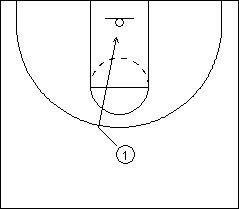 |
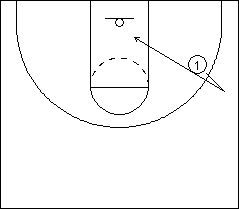 |
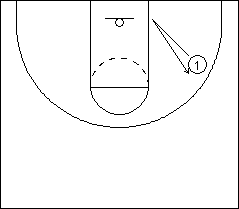 |
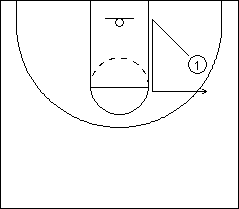 |
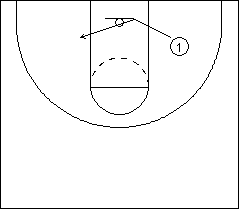 |
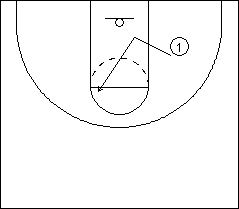 |
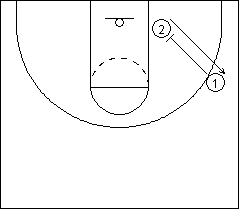 |
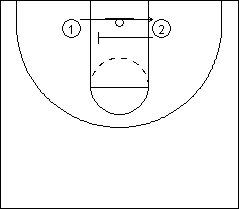 |
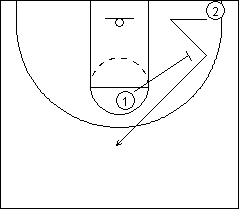 |
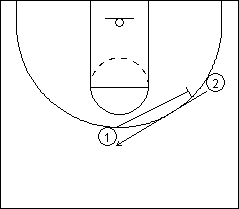 |
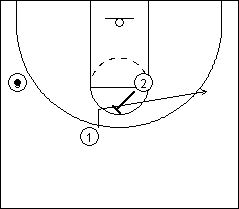 |
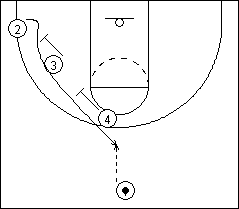 |
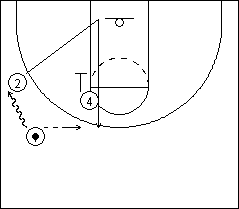 |
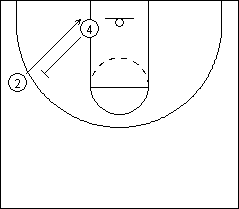 |
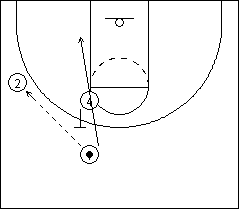 |
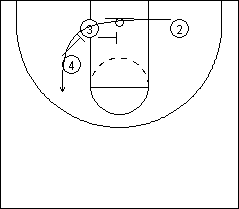 |
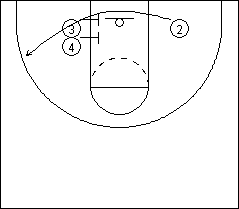 |
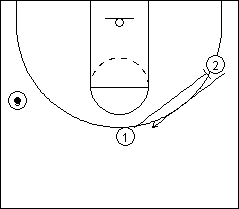 |
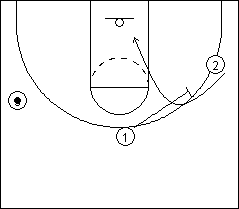 |
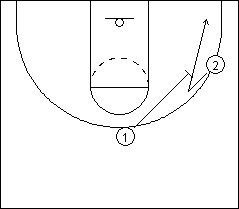 |
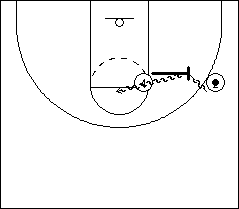 |
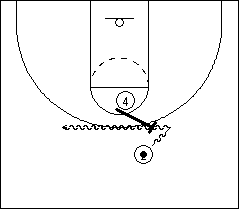 |
These are just examples and are my terminology and I use it so you might better understand the offensive examples in this section. In other sections we will discuss the specifics of each but in this offensive section they are intended to help with the overall big picture of constructing an offense.
OFFENSIVE SAMPLES
Please note that coaches have their own options and wrinkles in everything they do. Below are offensive examples drawn from my experience and in no way indicate that they are the only way to run them. Sets, options, keys, etc. should all be adapted to the personnel and the coach's personal style.
These samples are only meant to give a better understanding of the big picture of types of offenses. We only give a brief description of each type of offense.
Free Form Offense
As stated in the section above, this type of offense moves based on rules as opposed to pre-planned cuts.
5 Out Motion
Personnel All players must have ball skills and be able to make shots from the perimeter |
|
Rules There are 8 spots on the floor. When cutting, fill one of them and try to free a teammate on the way. |
|
| Make the next open pass. After passing, player has 2 options: Basket cut or accept a flare screen. |
|
When basket cutting, come out opposite the ball. Other players adjust to the open spot. |
|
Look opposite the pass you receive for your next pass. |
|
Fill a post spot for a maximum of 2 passes. |
|
|
|
|
|
|
|
|
|
|
|
|
|
|
|
Continuity Offenses
| Personnel All players must have ball skills and be able to make shots from the perimeter. 4, 5 and possibly 3 must be comfortable posting up. |
|
Basic Instructions
|
|
|
|
|
|
|
|
|
|
|
|
|
|
|
|
|
|
|
|
|
|
|
|
|
|
|
|
|
|
|
|
|
|
|
|
|
|
|
|
Tennessee Shuffle
| Personnel All players must have ball skills and be able to make shots from the perimeter. 4, 5 and possibly 3 must be comfortable posting up. Set is a box, however you can start in any set |
|
Basic Instructions
|
|
|
|
|
|
|
|
|
|
|
|
|
|
|
|
|
|
|
|
|
|
|
|
|
|
|
|
|
|
|
|
|
|
|
|
|
|
|
|
Called Play Offense
UCLA High-Low Post (1-4 Set) – These are only 3 of many options
Personnel 1- Point Guard 2,3 – Shooters 4,5 – Post Players |
|
Basic Option
|
|
|
|
|
|
|
|
|
|
"Stagger" Option
|
|
|
|
|
|
|
|
"Reverse" Option
|
|
|
|
|
|
|
|
|
|
|
|
Quick Hitters
These plays are designed to get a particular player a shot in a particular spot. Some have secondary options but that is only if the primary shooter is defended.
5 – Up
Personnel 1 – Point guard 2 – Best Scorer 3 – Best shooter 4,5 – Post men, screeners |
|
Instructions
|
|
|
|
|
|
America's Play
This is called "America's Play" due to the fact that at one point, it seemed as if everybody in America was running it.
Personnel 1 – Point guard 2 – Best shooter 3, 4 – Big forwards 5 – Best low post players |
|
Instructions
|
|
|
|
|
|
3 Special
This is designed to get your best shooter a 3 point shot
Personnel 1 – Point guard 2 – Best shooter 3 – Secondary shooter 4,5 – Screeners |
|
Instructions
|
|
|
|
|
|
Zone Offense
UMass
Personnel 1 Point guard – ball reversal 2, 3, 4, - shooters 5 – Post |
|
Basic Instructions
|
|
|
|
|
|
|
|
|
|
|
|
|
|
|
|
To get FREE 33 Winning Basketball Plays, click the banner below
What do you think? Let us know by leaving your comments, suggestions, and questions...
|
||||||||||||||||||||||||


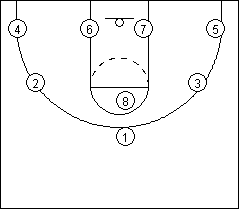
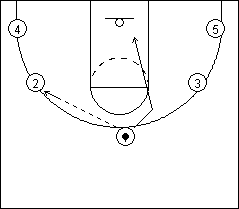
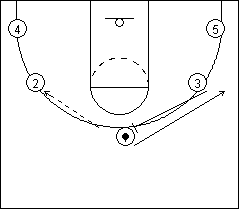
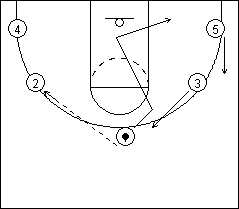
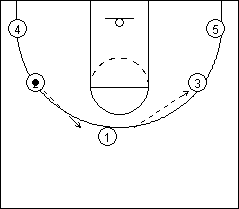
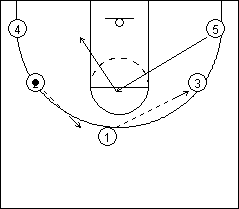
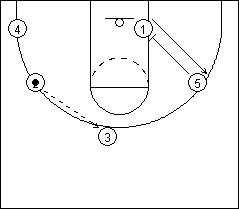
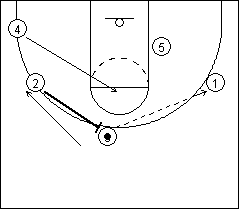
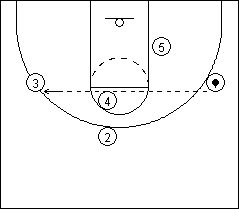
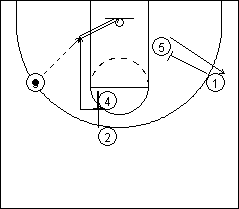
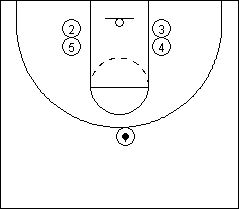
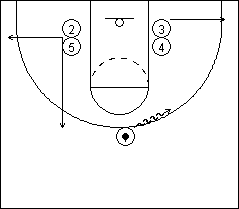
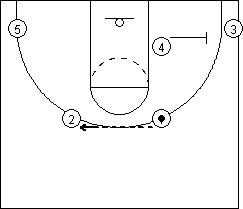
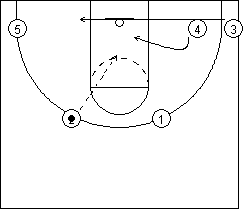
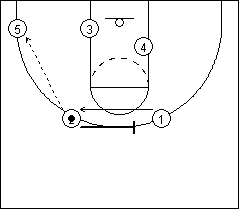
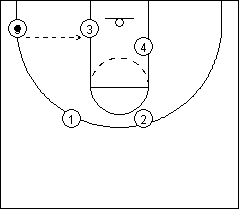
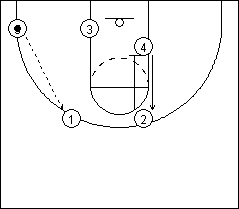
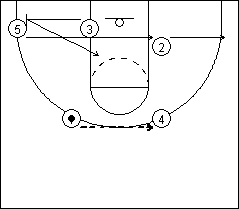
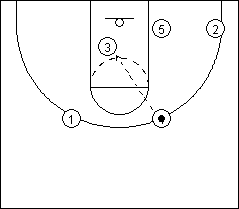
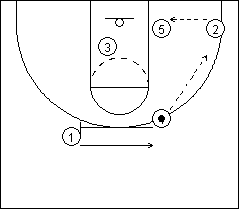
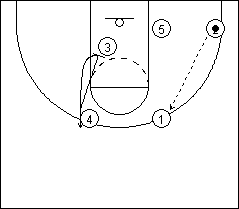
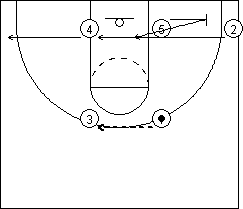
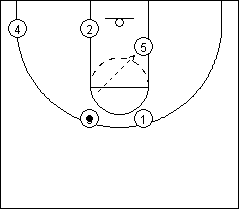
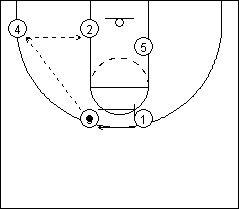
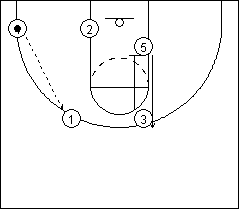
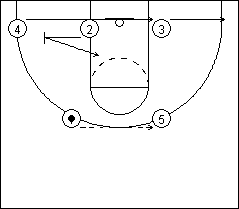
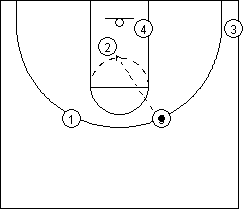
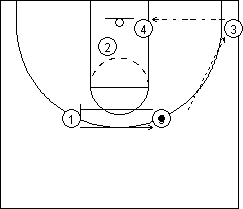
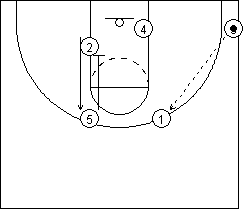
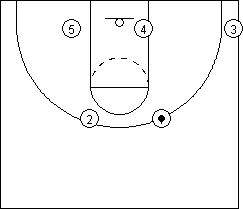
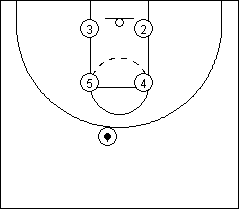
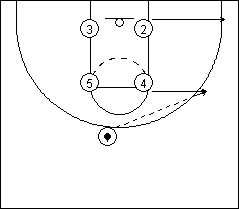
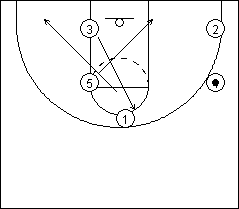
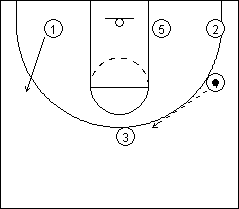
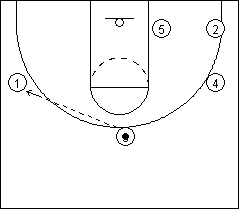
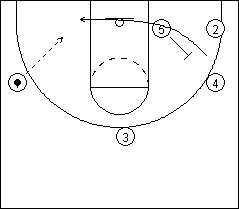
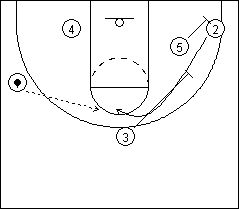
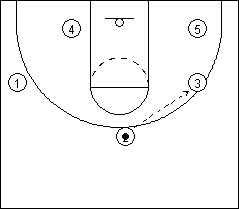
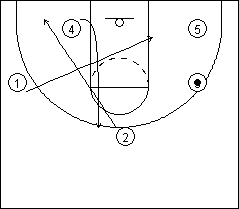
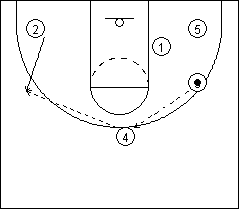
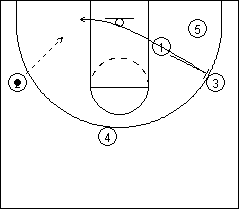
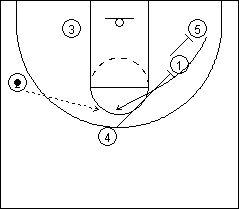
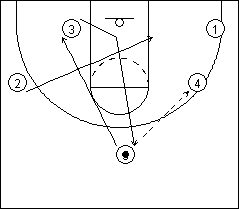
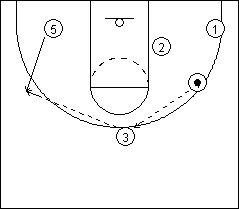
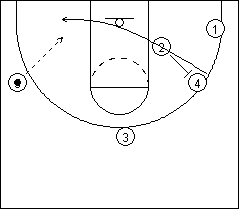
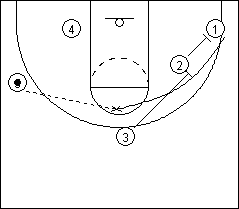
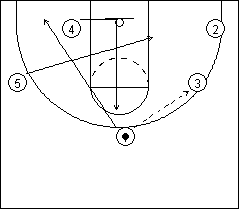
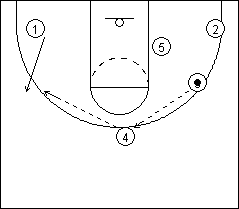
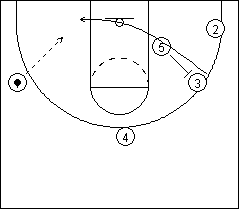
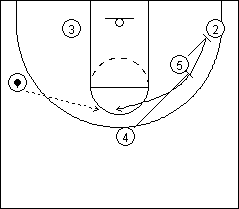
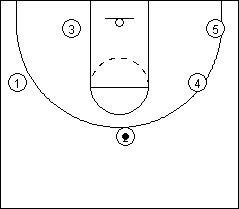
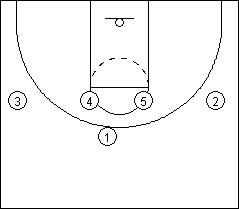
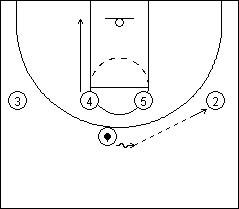
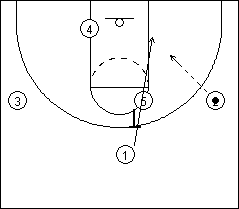
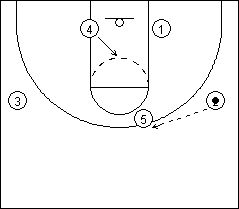
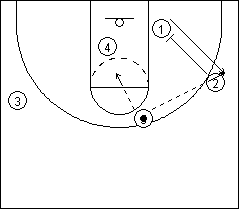
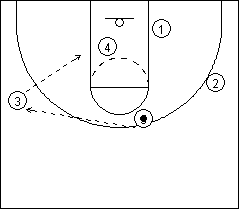
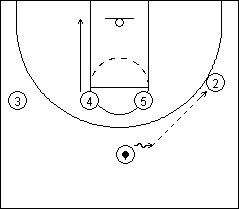
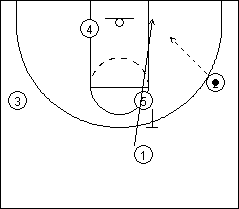
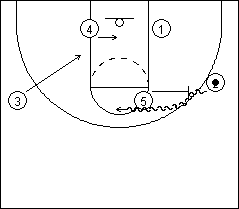
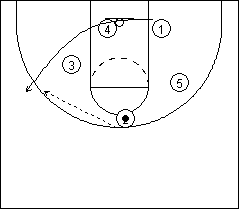
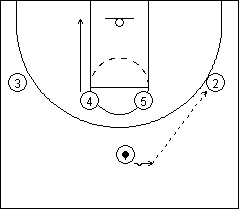
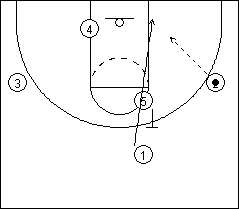
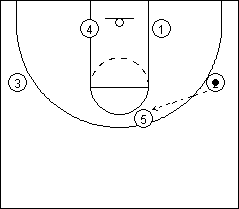
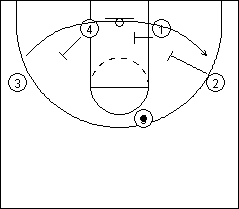
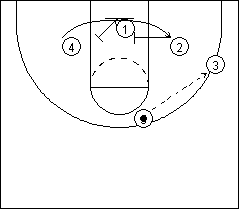
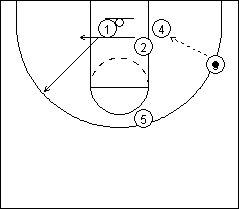
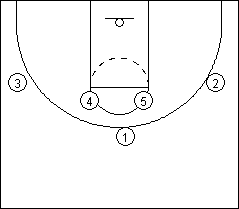
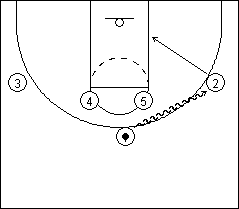
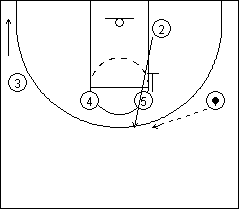
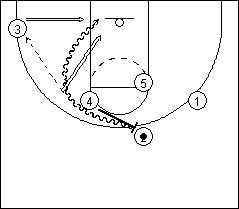
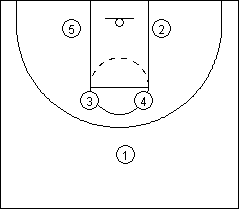
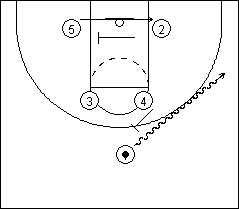
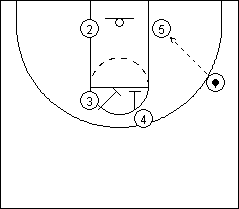
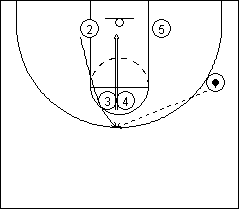
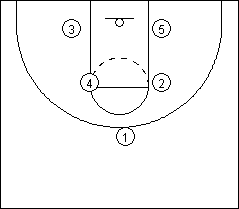
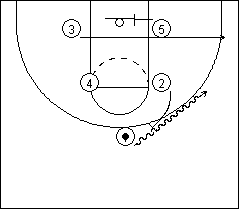
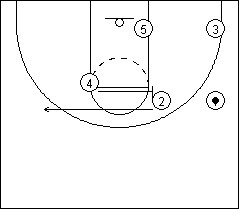
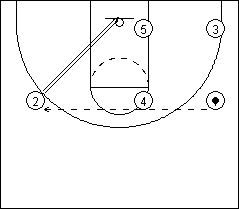
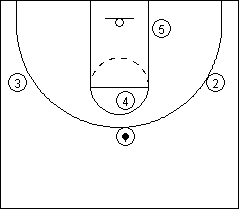
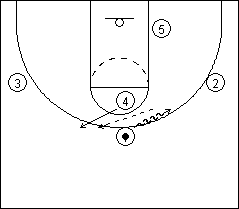
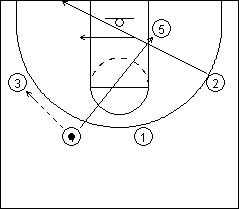
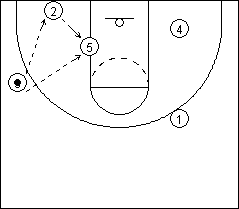
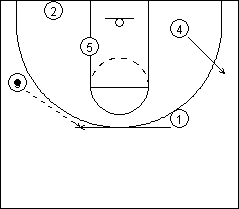
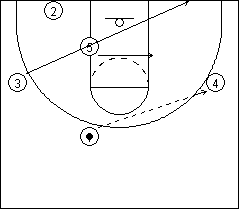
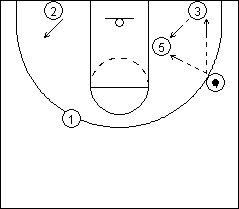
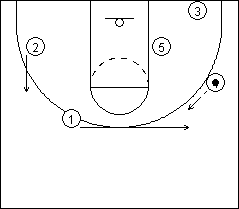
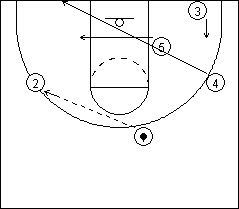


 Facebook (145k Followers)
Facebook (145k Followers) YouTube (152k Subscribers)
YouTube (152k Subscribers) Twitter (33k Followers)
Twitter (33k Followers) Q&A Forum
Q&A Forum Podcasts
Podcasts